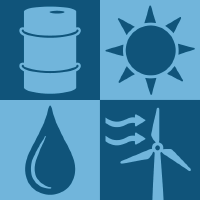Topic Menu
► Topic MenuTopic Editors


Frontier Research in Energy Forecasting
Topic Information
Dear Colleagues,
The modern-day energy sector includes many challenges that affect secure and reliable electricity generation and delivery. Utilities, generation companies, system operators, and other parties have been continually seeking methods to cope with the various challenges. Among the methods, forecasting holds a prominent role in energy systems. Accurate forecasts can limit the technical and economic risks of energy systems operations. Demand forecasting is essential in power generation scheduling, fuel import planning, interconnection operation, and others. Generation forecasting can transform variable energy resources such as photovoltaics and wind turbines into dispatchable sources. Thus, energy forecasting is a scheme with many applications. According to the literature, there is a variety of different energy forecasting models. Time series models refer to autoregressive time functions. These models have historically been the first to be implemented. Recent approaches include machine learning architectures such as neural networks, neuro-fuzzy systems, support vector machines, and others. Machine learning models can effectively simulate nonlinear time series. Finally, a new research trend is deep learning; the scope is to train neural networks in more detail so as to achieve better accuracy. In the context of these challenges, the main scope of this Special Issue is to propose new methods in energy forecasting. State-of-the-art papers together with innovative case studies are invited. Multidisciplinary research and cutting-edge approaches are welcomed in order to address the challenges that are raised by contemporary energy systems and deregulated energy markets.
Dr. Ioannis Panapakidis
Dr. Minas Alexiadis
Dr. Aggelos S. Bouhouras
Topic Editors
Keywords
- demand forecasting
- energy forecasting
- photovoltaics generation forecasting
- wind turbine generation forecasting
- spatial and temporal forecasting
- deregulated energy markets
- distributed energy resources
- smart grids
- power system planning
- machine learning
Participating Journals
| Journal Name | Impact Factor | CiteScore | Launched Year | First Decision (median) | APC |
|---|---|---|---|---|---|

Energies
|
3.2 | 5.5 | 2008 | 16.1 Days | CHF 2600 |

Forecasting
|
3.0 | 4.0 | 2019 | 28.5 Days | CHF 1800 |

Resources
|
3.3 | 7.7 | 2012 | 23.8 Days | CHF 1600 |

Sustainability
|
3.9 | 5.8 | 2009 | 18.8 Days | CHF 2400 |

MDPI Topics is cooperating with Preprints.org and has built a direct connection between MDPI journals and Preprints.org. Authors are encouraged to enjoy the benefits by posting a preprint at Preprints.org prior to publication:
- Immediately share your ideas ahead of publication and establish your research priority;
- Protect your idea from being stolen with this time-stamped preprint article;
- Enhance the exposure and impact of your research;
- Receive feedback from your peers in advance;
- Have it indexed in Web of Science (Preprint Citation Index), Google Scholar, Crossref, SHARE, PrePubMed, Scilit and Europe PMC.

